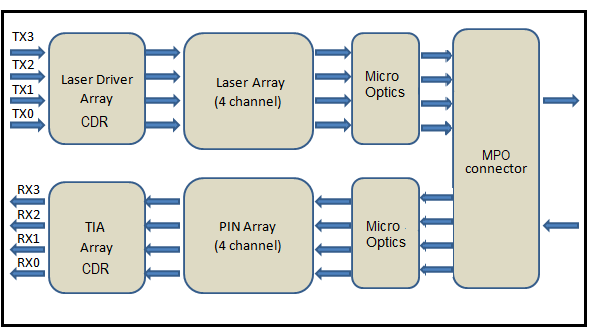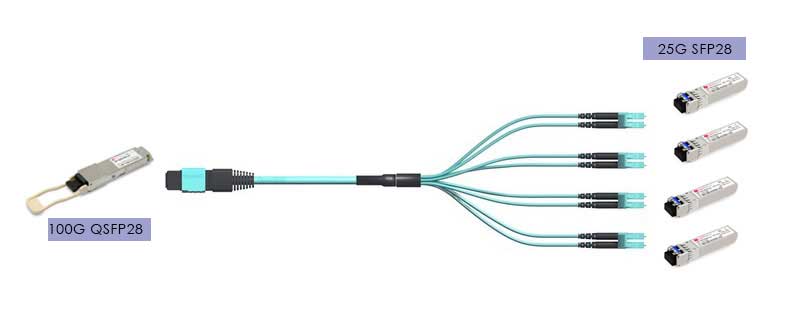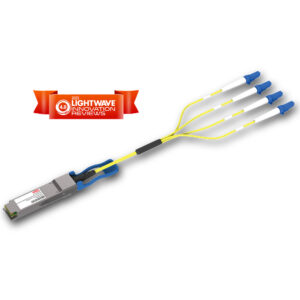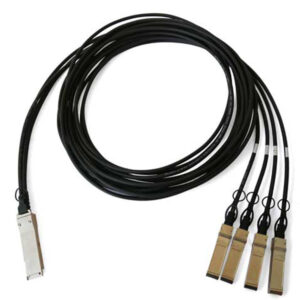Breakout deployments are becoming popular in networking driven by demands for higher bandwidths The chief advantage of breakouts is that it allows incremental network upgrades. So, a high-speed switch can interface with a lower speed one using breakouts.
Now that 100G is being widely adapted in data centers, the need for breakout options is rising. A parallel 100G QSFP28 transceiver offers 4 independent transmit and receive channels, each capable of 25Gb/s operation for an aggregate data rate of 100Gb/s over multi-mode fiber. This design allows a parallel 100G transceiver to operate as either four 25G links or one native 100G link.

The figure below illustrates how a simple breakout connection is made between one 100G QSFP28 SR4 transceiver and 4 x 25G SFP28 transceivers.

The QSFP28 SR4 transceiver accepts an OM3 or OM4 MPO-type connector with breakout cables that separate the lanes into four transmit and receive pairs and connects to 4x SFP28 SR transceivers. Vitex also offers a 100G parallel optical module with 2km reach that can breakout to 4x25G. This PSM4 module uses SMF.
In addition to transceivers, breakouts can also be implemented with AOCs and DACs. AOCs and DACs come with pre-terminated transceivers at their ends. Vitex offers AOCs and DACs in various configurations. For server to switch connections, AOCs and DACs are cost-effective choices.
It is important to note that not all switches or all ports support breakouts. Check the switch manual to ensure that your switch support breakout connections. Breakouts maximize flexibility for end users allowing higher bandwidths while still providing access to lower speed ports. For more information on breakouts and how to use them, contact our experts at sales@vitextech.com.
Related Products



